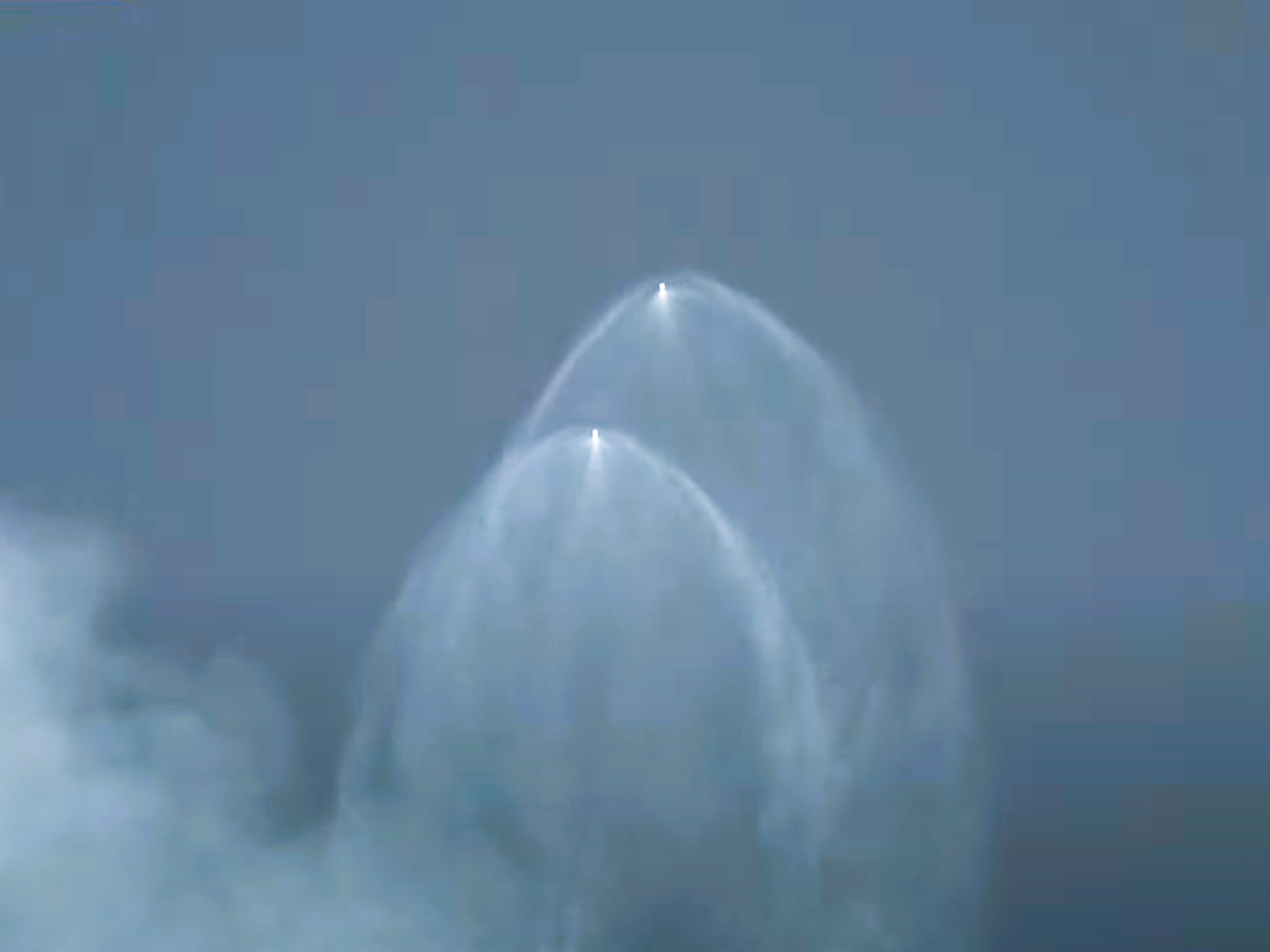SpaceX uses ultra-powerful rocket for mystery military mission
US Space Force says launch will help ‘senior leaders and combatant commanders’ to communicate

SpaceX used its most powerful operational rocket to successfully launch a classified mission for US Space Force on Sunday.
The USSF-67 mission lifted off from Launch Complex 39A at Kennedy Space Center in Florida at 5.56pm local time in what was only the fifth ever launch for the Falcon Heavy rocket.
The private space firm gave no details of the payload and cut the launch live stream after the boosters detached in order to not disclose its final orbital position.
Officials at Space Force’s Space Rapid Capabilities Office (SRCO) said the payload includes “two operational prototypes for enhanced situational awareness and an operational prototype crypto/ interface encryption payload providing secure space-to-ground communications capability”.
The main satellite will be positioned in a geostationary orbit 35,700km above Earth, the US government agency said, serving as communication relay to support “senior leaders and combatant commanders”.
The Falcon Heavy rocket, which consists of three modified versions of its Falcon 9 rocket, is capable of generating 5 million pounds (2.3m kg) of thrust at lift-off, making it the most powerful rocket ever launched before November last year when Nasa’s Space Launch System (SLS) overtook it when it lifted off for the Artemis 1 mission.
SpaceX will get a chance to beat Nasa’s record as early as next month when it attempts the first ever launch of its Starship and Super Heavy Booster rocket stack from its Starbase facility in Texas.
The Super Heavy rocket is projected to produce 7.25 million kg of thrust – nearly double that of Nasa’s SLS – thanks to 33 Raptor engines firing simultaneously.
Join our commenting forum
Join thought-provoking conversations, follow other Independent readers and see their replies
Comments